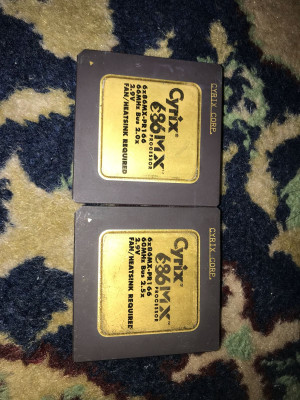As far as I'm aware Cyrix had to make a special effort to have the 200+(original 75Mhz part) made, the yields weren't particularly high and also motherboards that could take the 75 MHz bus speed weren't in high availability either. It was however the fastest x86 part on the market at the time. The other thing was as cooling systems were pretty scare that could keep the chip at acceptable temperature levels(a normal sink for a pentium was not up to the job) and even VRM's on the board need better cooling than the Pentium or the K5 did. The later "L" models of the 200+ kept the same speed but needed both less cooling or power. The 66 MHz part as far as I'm aware were the later MX parts, a redesigned core with MMX and much lower requirement for both power and cooling at similar ratings. Cyrix always tended to push the FSB boundaries with both 75 MHz and later 83 MHz parts on socket 7, finally 100 MHz right near the end, the board makers were a little slower to react to this but SiS is your best bet for a good compatible motherboard chipset(they also supported the Cyrix Linear Burst mode) for the 6x86 and a cooler for a socket 370 machine is the simplest solution these days.
The Cyrix is VERY fast for integer, but fell behind the Pentium for FPU performance, Cyxis's FPU was based on their 386 FPU, by far the best of the time by a country mile, but guess they didn't see Quake coming or know the significance that would have for future games. But outside of Quake it's a great chip and a real piece of innovative history and will run all your games just great, even Quake is OK until you start to compare it to the Pentium(Quake used hand coded intel P5 FPU optimizations).
As to overclocking, forget it to be honest, the 200+ was at it's limits at launch, some of the later Cyrix MII chips can manage a bit however. It is however worth getting the Cyrix tweak utility to enable some registers on the chip for various functions, this can help a whole lot.
286 20MHz,1MB RAM,Trident 8900B 1MB, Conner CFA-170A.SB 1350B
386SX 33MHz,ULSI 387,4MB Ram,OAK OTI077 1MB. Seagate ST1144A, MS WSS audio
Amstrad PC 9486i, DX/2 66, 16 MB RAM, Cirrus SVGA,Win 95,SB 16
Cyrix MII 333,128MB,SiS 6326 H0 rev,ESS 1869,Win ME
